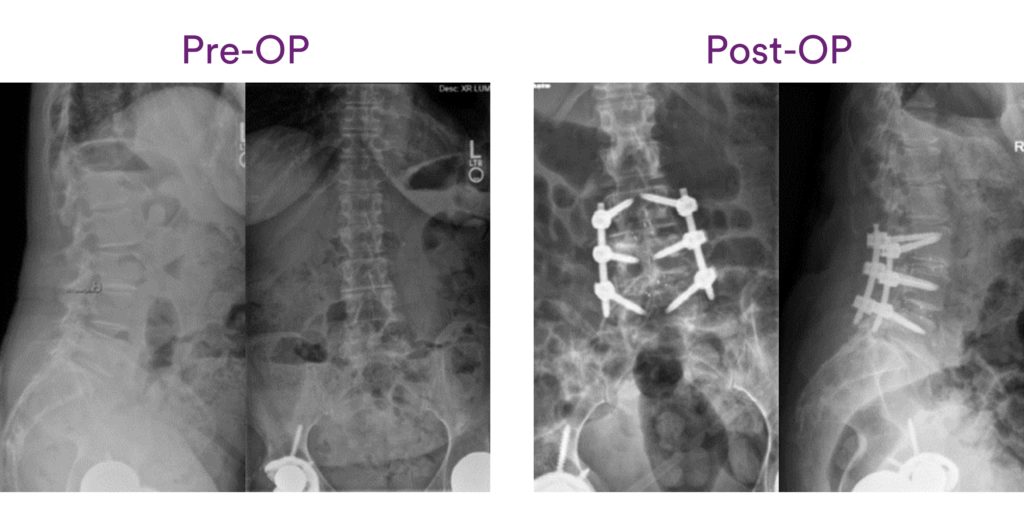
In our Featured Case series, NuVasive showcases innovative cases and how our technologies are integrated to create a cohesive system to address key patient pathologies. Our mission at NuVasive is to transform surgery, advance care, and change lives and we are constantly focused on how to deliver improved patient outcomes, increase OR safety and efficiency, and extend our technology to future applications.
In this Featured Case, we present an 81-year-old female with a history of Parkinson’s disease. She has been dealing with lower back pain for over a year. Her pain worsens when standing and walking, with pain radiating down her left leg. Because of her pain, she has to use a walker.
The patient connected with Dr. Clark of UCSF Health in San Francisco. Based on the patient’s medical history, symptoms, and pathology, Dr. Clark elected to perform a decompression at L2-L3 followed by a MAS TLIF at L3-L4 and L4-L5 utilizing the MAS TLIF 2 Split Tube access system. The surgical plan included two Cohere TLIF-O interbodies with Osteocel Pro from L3-L5, and Reline Traction screws to fixate the construct. In addition, Dr. Clark utilized Navigation.S Reline and Navigation.S Excavation to reduce the need for fluoroscopy and streamline his surgical workflow. In doing so, he was able to achieve direct decompression, restoration of disc height, and reduction of the operative levels.
“This patient was quite frail at baseline from medical and neurologic comorbidities. I think that a two level open operation would have been associated with significantly higher blood loss, muscle disruption, postoperative pain, and significantly slower recovery.”-Aaron Clark, MD


“I decided on split blade TLIF for this patient because, in addition to the spondylolisthesis and degenerative disc disease from L3-L5, she also had severe lateral recess and foraminal stenosis causing left leg pain and weakness. She also had severe left lateral recess stenosis at L2-L3. An ALL-posterior, minimally invasive approach allowed me to not only perform a two level fusion, but also to do direct decompressions of the central canal and foramen at L2-L3, L3-L4, and L4-L5 in a single position procedure.”
Learn more about the NuVasive less invasive procedural solutions by clicking here.
An individual’s surgical procedure and recovery may deviate from what is described herein. Each case is unique and has its own independent considerations. It is the surgeon’s responsibility to discuss all relevant risks with the patient prior to surgery.
Click here to access each of the above-referenced product specific Instructions for Use for important product safety information, including, but not limited to, indications, contraindications, warnings, precautions, and potential adverse effects.